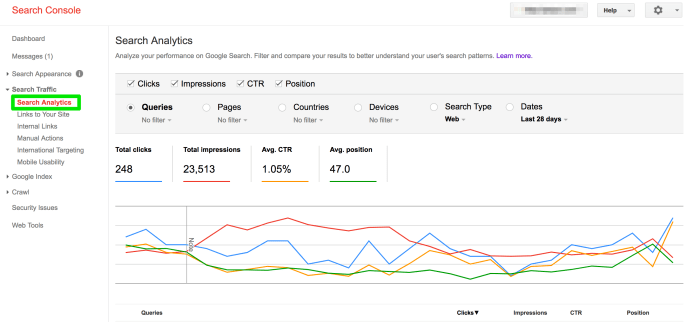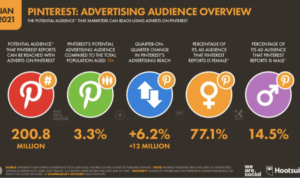Kicking off with Using Google Search Console, this opening paragraph is designed to captivate and engage the readers, setting the tone for a high school hip vibe that unfolds with each word. Google Search Console isn’t just a tool; it’s your ticket to website success in the digital jungle.
As you navigate through the realm of website management, Google Search Console emerges as your trusty sidekick, helping you conquer the challenges and emerge victorious in the search engine arena.
Introduction to Google Search Console
Google Search Console is a powerful tool provided by Google that allows webmasters to monitor, maintain, and troubleshoot their website’s presence in Google search results. By utilizing this tool, webmasters can optimize their website’s visibility and performance, ultimately driving more traffic to their site.
Purpose and Benefits
Google Search Console serves as a central hub for webmasters to understand how Google views their website. It provides valuable insights into the performance of the site, highlighting areas for improvement to enhance search engine optimization () efforts. By identifying and fixing issues such as indexing problems, website errors, and mobile usability issues, webmasters can ensure that their site is well-optimized for search engines.
Monitoring Website Performance, Using Google Search Console
Through Google Search Console, webmasters can track the search traffic to their site, analyze the s that drive traffic, and view the click-through rates for different queries. This data allows webmasters to make informed decisions about their content strategy and identify opportunities to attract more visitors to their site.
Key Features and Tools
Google Search Console offers a range of tools to help webmasters manage their website effectively. These tools include the Performance Report, Index Coverage Report, Mobile Usability Report, and URL Inspection Tool. Each of these tools provides valuable insights into different aspects of website performance, helping webmasters make data-driven decisions to improve their site’s visibility on Google search results.
Setting up Google Search Console

Setting up Google Search Console is crucial for optimizing your website’s performance and visibility on search engines. Here’s how you can get started:
Verifying Your Website
To verify your website on Google Search Console, you can use different methods such as:
- Uploading an HTML file provided by Google to your website’s root directory.
- Adding an HTML tag to your website’s homepage.
- Verifying through your domain name provider by signing in and selecting the provider from the list.
Configuration Settings
Once your website is verified, you can set up preferred domain, country targeting, and other configuration settings within Google Search Console to optimize your site for search engines. Some key settings to consider include:
- Setting a preferred domain (www or non-www) to ensure consistency in how your site is displayed.
- Targeting specific countries or regions to reach your desired audience effectively.
- Adjusting crawl rate settings to control how often Google crawls your site for new content.
Importance of Adding a Sitemap and Monitoring Crawl Errors
Adding a sitemap to Google Search Console allows search engines to easily discover and index your website’s pages, leading to improved visibility in search results. Monitoring crawl errors is also essential for identifying and fixing any issues that may be affecting your site’s performance. Regularly checking for crawl errors and addressing them promptly can help maintain a healthy website presence online.
Utilizing Performance Reports: Using Google Search Console

When it comes to making the most out of Google Search Console, understanding and utilizing the Performance Reports is key. This feature provides valuable insights into how your website is performing in Google search results, enabling you to make informed decisions to improve your online presence.
Analyzing Search Queries, Clicks, Impressions, and Average Position
The Performance report in Google Search Console offers a wealth of data that can help you understand how users are interacting with your website in search results. Here’s how you can interpret the key metrics:
- Search Queries: This shows the actual search terms that users are using to find your website. Analyzing this data can help you identify popular s and phrases relevant to your content.
- Clicks: The number of times users clicked on your website in search results. Monitoring clicks can give you insights into the effectiveness of your meta titles and descriptions.
- Impressions: The number of times your website appeared in search results. A high number of impressions with low clicks may indicate a need for improving your meta tags or content.
- Average Position: This metric shows the average ranking of your website in search results for a specific query. A higher average position can lead to more clicks and traffic to your site.
Using Performance Data to Identify Trends and Improve Click-Through Rates
Once you have a good grasp of the performance data, you can start identifying trends and patterns to optimize your content and improve click-through rates. Strategies to consider include:
- Identifying high-performing s and creating more content around them.
- Optimizing meta tags and descriptions to make them more compelling and relevant to users.
- Monitoring changes in clicks and impressions to gauge the impact of content optimizations.
- Experimenting with different strategies to see what works best for your website.
Significance of Filtering and Comparing Data for Actionable Insights
Filtering and comparing data in the Performance report can help you uncover valuable insights that can guide your strategy. By segmenting data based on different criteria such as date range, device type, or search appearance, you can:
- Identify seasonal trends or fluctuations in search performance.
- Compare the performance of different pages or sections of your website to prioritize optimization efforts.
- Monitor the impact of specific changes or updates on your website’s search visibility.
- Gain a deeper understanding of user behavior and preferences to tailor your content accordingly.
Enhancing Website Indexing
When it comes to enhancing website indexing, it’s crucial to ensure that new pages are submitted for indexing and updated content is re-indexed promptly through Google Search Console.
Submitting New Pages for Indexing
Submitting new pages for indexing is a straightforward process in Google Search Console. Simply navigate to the URL Inspection tool, enter the URL of the new page, and click on the “Request Indexing” button. This signals to Google that there is new content to be indexed on your website.
Requesting Re-Indexing of Updated Content
If you’ve made updates to existing content on your website, it’s essential to request re-indexing to ensure that the changes are reflected in search results. Use the URL Inspection tool to request re-indexing of specific URLs that have been updated.
Tips for Resolving Indexing Issues
- Address Coverage Errors: Regularly check the Coverage report in Google Search Console to identify and resolve any coverage errors that may be affecting your website’s indexing.
- Fix Mobile Usability Problems: Ensure that your website is mobile-friendly to avoid indexing issues related to mobile usability. Use the Mobile Usability report in Google Search Console to identify and fix any issues.
- Address Security Concerns: Secure your website with HTTPS to prevent security-related indexing issues. Regularly monitor the Security Issues report in Google Search Console to address any security concerns promptly.
Impact of Proper Indexing on Website Visibility
Proper indexing plays a significant role in determining your website’s visibility and ranking in search results. Websites that are well-indexed are more likely to appear in relevant search queries, ultimately driving organic traffic and improving overall visibility online.





